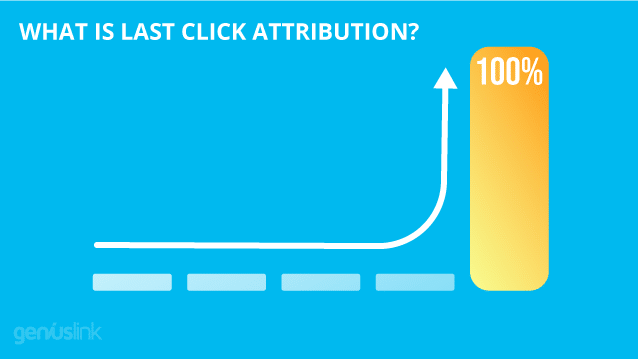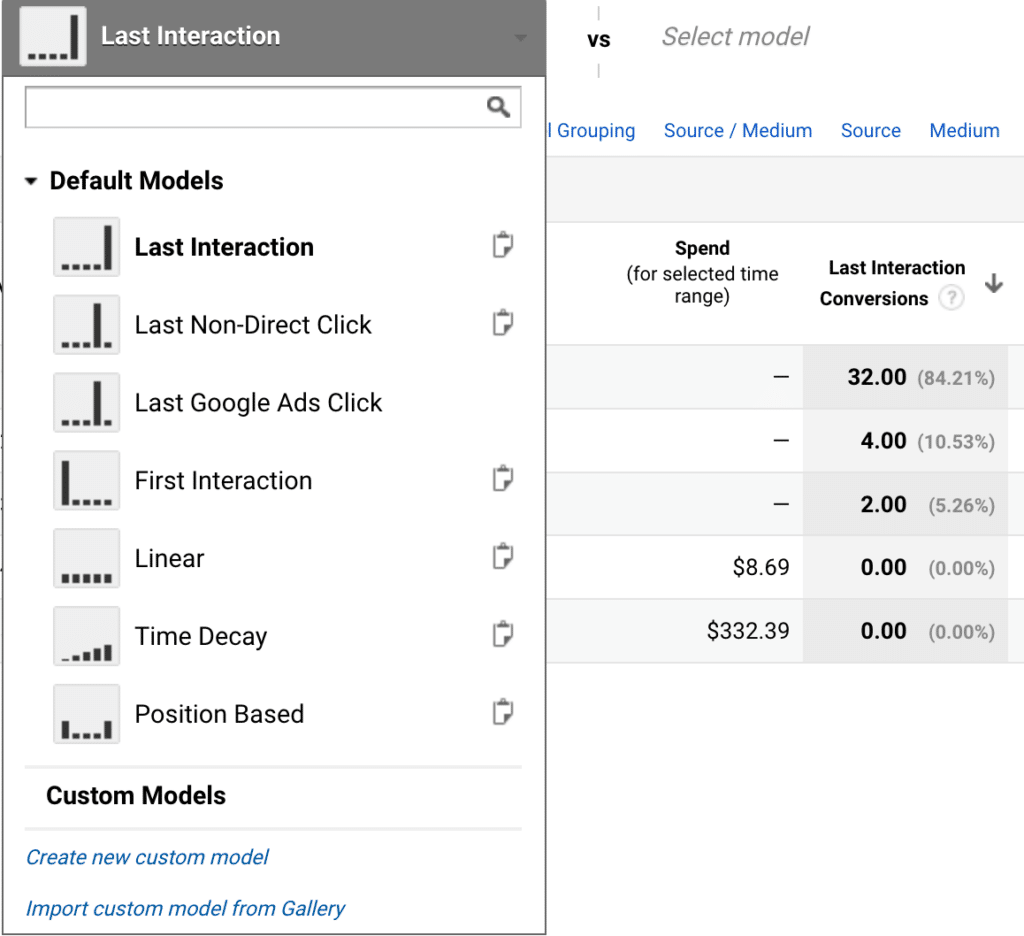What is Last Click Attribution
-
Jesse is a Native Montanan and the co-founder and CEO of Geniuslink - or, as he likes to say, head cheerleader. Before Jesse co-founded Geniuslink, he was a whitewater rafting guide, worked at a sushi restaurant, a skate/snowboard shop, was a professional student, and then became the first Global Manager at Apple for the iTunes Affiliate Program.
- August 17, 2023

In the affiliate marketing world, last-click attribution is often discussed for sale/conversion attribution.
In the modern-day of privacy and data, it can be difficult to figure out where to start when it comes to interpreting your audience.

Last click attribution is commonly used to reward affiliate marketers for sending buyers to a site.
It’s also a fantastic way to figure out where your own audience is coming from and help you to invest in ways to keep them coming. We compiled this blog to give you an introductory rundown on Last Click Attribution so you can better understand and use it in your affiliate practice.
You may be asking, what is last-click attribution?
What is last click attribution?
Last-Click Attribution refers to the web analytics model in which the “last click” is given credit for a sale or conversion. Last click attribution allows you to identify the source of your traffic, whether that be an ad, blog, video, or site.
This is prevalent in affiliate marketing because most affiliate programs and networks use last-click attribution to learn more about their audience and where they are coming from. The owner of a link drives a user to a site like Amazon receives a commission for the purchase. This “click, track, pay commission back” model is the basis of affiliate marketing. This is why last-click attribution and affiliate marketing are inherently linked.
The affiliate industry regularly agrees that this is not ideal, but little has been done about it.
What is the last click problem?
While last-click attribution is the basis of affiliate marketing, it is nowhere near perfect. The truth is, consumers are not that simple. Consumers in today’s environment are usually exposed to different sources before they visit a website. So a blog post could be why a consumer buys, but they might not get to the purchase through the link in the blog.
This emphasis on direct traffic leads to pressure on marketers to do less branding and more direct advertising. That ultimately is not good for the publisher/creator or their brand in the long run.
Customer behavior suggests that consumers usually research a product before they buy it, so oftentimes, they have had a prior experience with a product before they purchase it. Since the focus is on conversion, relationship building and brand awareness gets put on the backburner.
Last click attribution tends to benefit coupon/discount sites, which are oftentimes considered less important in the buying cycle and cause marketers to ignore the conversion funnel.
The conversion funnel shows a buyer’s whole journey to a purchase. Many useful sites specialize in the awareness section of the funnel. But unfortunately, they do not get paid for the useful information that they give out. Instead, “buy quickly and buy now!’ coupon sites tend to get paid for these sites’ hard work.
One strategy many of our clients have found success with is to use choice pages. By presenting prospective buyers with multiple purchase options, their “price comparison” need often meets and prevents them from opening a new browser tab to price compare.
Does Google Analytics use last click attribution?

Yes, it does to an extent. But, Google Analytics has an entire section called multi-channel funnels that gets us closer to understanding how all of our digital marketing is working together.
There are some alternative viewpoints to last-click attribution, such as the multi-touch model, linear Model, and time decay model.
Multi-touch attribution is a method of marketing measurement that evaluates each touchpoint’s impact in driving a conversion, thereby determining the value of that specific touchpoint.
For example, let’s say that a consumer is considering purchasing a new jacket. After doing some research, they are targeted by ads from Patagonia. First, they see a display ad, which they ignore. Next, they see a native ad on their Instagram feed that catches their attention and drives them back to the Patagonia site. Finally, they get a promotional offer via email with a discount code that causes them to purchase. In this example, the email promo gets credit for the sale, and the display ad might be noted to be less effective, and Patagonia might cut their social media budget down.
Second, there is The Linear Model.
The Linear Model
The linear model distributes the credit for the conversion equally across all clicks on the conversion path. So, in our Patagonia example, if it takes someone to go from social, to the blog, to a conversion, each click receives an equal part of the total conversion credit. So both social media and the blog receive credit.
Finally, there is the Time Decay Model.
Time Decay Model
The time decay model gives more credit to clicks that happen closer in time to the actual conversion. So in the example where someone clicks from paid search to social media, to the blog, and then converts, the blog will receive more credit than paid search.
Should you use last-click attribution?
Unfortunately, as an affiliate creator or publisher, you do not have much of a choice.
As an affiliate manager, you are often bound to last-click attribution. Still, many affiliate programs are working to evolve from this model to give credit to the creators and publishers at the top of the funnel.
Some tips
Keep the full customer journey in mind
What we find with our clients is their sites are optimized for discovery or the top of the funnel. This is a great way to build a brand. However, it is important to optimize your site or channel for the bottom of the funnel as well. Make it easy for your consumer to discover AND take action.
A great way to do this is through Choice Pages. Choice Pages allow you to help your visitors with comparison shopping and present them with options that you can earn from either way. This can prevent you from losing clients because they open a new tab to comparison shop.
“Optimize around “buyers keywords”
Bring the right people to your site. They can also bring consumers in different parts of the buying journey to your site. Optimize what you rank for to match the part of the funnel someone is looking for.
Matching the buyer’s intent with content can help you to be in the right place at the right time for their conversion.
Last-click attribution is here to stay, whether we like it or not, so equipping yourself with the right knowledge about it is crucial. With anything, make sure you keep your audience, and their stage in buying in mind, and the rest will come.
Thanks for reading along! Comment any further questions in the comments.
Author
-
Jesse is a Native Montanan and the co-founder and CEO of Geniuslink - or, as he likes to say, head cheerleader. Before Jesse co-founded Geniuslink, he was a whitewater rafting guide, worked at a sushi restaurant, a skate/snowboard shop, was a professional student, and then became the first Global Manager at Apple for the iTunes Affiliate Program.
Author
-
Jesse is a Native Montanan and the co-founder and CEO of Geniuslink - or, as he likes to say, head cheerleader. Before Jesse co-founded Geniuslink, he was a whitewater rafting guide, worked at a sushi restaurant, a skate/snowboard shop, was a professional student, and then became the first Global Manager at Apple for the iTunes Affiliate Program.
More revenue from every link you share
Geniuslink makes localizing, tracking, and managing smart links dead simple, so you can earn more without added work.
